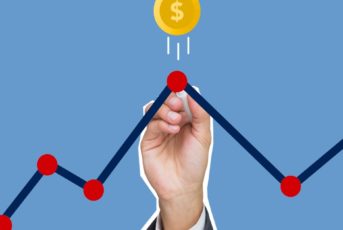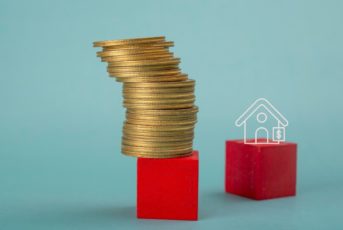With the stock market hitting all time highs each day, investors are wondering if a recession is imminent. Some predict a recession is going to happen in 2020 while others think a recession will occur before year-end 2019. First, let’s define what a recession is and what it is not. By definition, a recession is two consecutive quarters of negative GDP (Gross Domestic Product). A recession is not a sharp decline in the stock market or consecutive months of negative returns in the stock market. The stock market is only one of many leading economic indicators. So how can we spot the next recession before it happens and protect our portfolios? The short answer is you cannot predict the market or the economy, but you can monitor key economic indicators to see where we are in the business cycle. The business cycle is the natural progression of the economy and consists of four phases: expansion, peak, recession, and recovery. Knowing where we are in the business cycle helps us make informed investment and business decisions. Below are explanations of each phase in the cycle in their order of occurrence.
Expansion
In the expansion phase, company profits are growing, banks are loosening their lending standards, unemployment is declining, and GDP is expanding. In short, people are happy because they have steady jobs, their wealth is growing and they are spending money – investors call this a bull market.
Peak
In the peak phase, prices for all goods and services are reaching their all time highs, consumers are more leveraged, GDP is not growing, but is not declining yet either. Unemployment is very low and not declining further.
Recession/Depression
In the recessionary phase, GDP turns negative as the total goods and services sold declines. Unemployment starts to rise as companies start to lay off employees; the price of assets such as real estate and cars declines; people start to make late payments on their debt or are starting to default. The overall mood of consumers starts to slump. The government may begin fiscal or monetary policy to stimulate the economy. Fiscal policy is tax cuts and monetary policy is the increasing or decreasing of interest rates by the Federal Reserve. There is no clear definition of a depression, but there is an old saying: a recession is when your neighbor is out of work and a depression is when you are out of work.
Recovery
In the recovery phase, the economy starts to grow again. Investors start buying assets that declined in value during the recession; businesses start to hire again; and unemployment begins to decline again. This continues until the expansion phase.
The business cycles can be best tracked by reviewing economic indicators. There are three types of indicators: leading, lagging, and coincident. Leading indicators try to predict a future event, lagging indicators show what happened in the past, and coincident indicators occur simultaneously as the events. There are hundreds of indicators, but below are a handful of key indicators monitored by investors and the Federal Reserve to predict the future direction of the economy.
Stock Market
The stock market is one of the greatest leading indicators. It is considered a leading indicator because investors value stocks not based on how the company has performed in the past, but how much money the company will make in the future. Therefore, if investors perceive lower future earnings, they will sell stocks.
Unemployment
Unemployment is a lagging indicator because it measures what has already happened. Despite being a lagging indicator, unemployment numbers are very closely forecasted and watched. Unemployment is currently at an amazingly low 3.8%, which means that 96.2% of Americans are employed. While unemployment is very low, it is not declining further; some might consider this a peak. Conversely, unemployment peaked at 10% in October 2009 (Federal Reserve).
Yield Curve/Interest Rates
Another important leading indicator to watch is the yield curve or interest rates. The yield curve is an upward sloping graph of the terms of interest rates. In a normal yield curve, interest rates are lower in the short-term and higher in the long-term. This is logical since investors will be expected to be compensated more for loaning their money at longer terms. When short-term interest rates rise because the Federal Reserve is rising rates, but long-term interest rates do not rise in tandem, this creates an inversion in the yield curve. Yield curve inversions have historically led to recessions/contractions in the economy, but not always.
Loan Delinquencies
Loan delinquencies greater than 90 days are also a lagging indicator of the health of the economy. The Federal Reserve publishes quarterly data on loan delinquencies separated by all types of loans: credit cards, residential/commercial real estate, student loans, auto loans, etc. If loan delinquencies start to rise, it might indicate consumers are over-leveraged and that defaults may be on the horizon.
Other Indicators
There are many other important economic indicators economists and investors track to gauge the direction of the economy. Other well known indicators include: retail sales, new building permits, housing starts, corporate profits, inventory levels, durable goods orders, strength of US dollar, balance of trade, manufacturing activity, new business licenses, wage growth, and many others.
Given some of the leading indicators discussed, it’s pretty clear we are well into the expansion phase and maybe at the peak. However, there is no rule that limits the length of each phase so it is impossible to determine when we will shift from peak to recession. The U.S. economy is very complex and has a lot of moving parts, so no one should rely on just a handful of indicators to predict the direction of the markets and/or the economy. In fact, trying to predict future events is nearly impossible without inside information (which is illegal). Investors who claim to have successfully timed the market are unable to repeat their initial luck.
Next Steps
We are 10 years into an economic expansion and talk about a recession has been brewing for the past few years. People have all kinds of reasons why a recession is coming: it happens every 10 years; the yield curve is flat; Greece is going to default; there is going to be a trade war; Brexit, the list goes on. Yet despite all of these prognostications, the U.S. economy continues to remain on strong footing. But it is naive to assume a recession will not occur at some point. For this reason, it is absolutely crucial for investors to maintain a well balanced portfolio. Only a diversified portfolio will weather the storms of economic cycles. For many individual investors, that is easier said than done. After all, it is hard to sell an investment that has appreciated and replace it with one that has lost value, but mounds of research shows that doing so actually reduces your risk without sacrificing returns. Watch your allocations closely; don’t get too overly concentrated in any position because it’s performed well and you’re reluctant to trim your position.
Ara Oghoorian, CFA, CFP®, CPA is the President & Founder of ACap. ACap Advisors & Accountants is a “Fee-Only” wealth management and full-service accounting firm, specializing in helping doctors and healthcare professionals make sound financial decisions.
Contact ACap at info@acapam.com or 818-272-8511.









